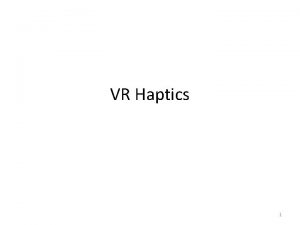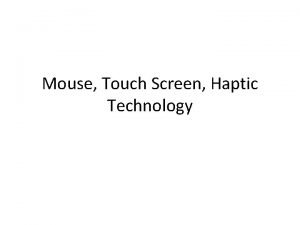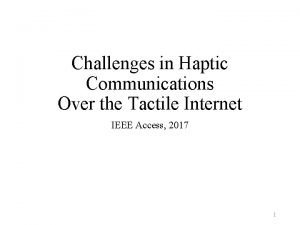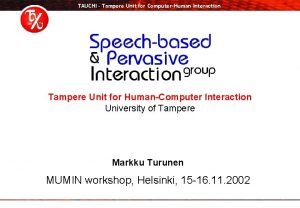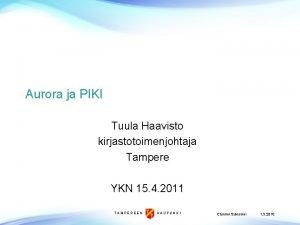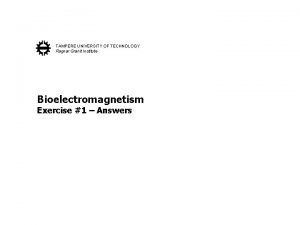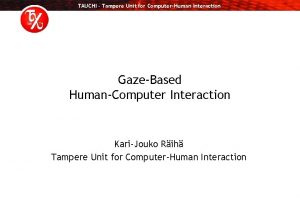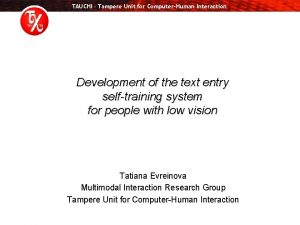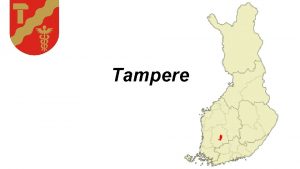TAUCHI Tampere Unit for ComputerHuman Interaction Haptic Sleeve







- Slides: 7

TAUCHI – Tampere Unit for Computer-Human Interaction Haptic. Sleeve Research plan for the Stanford visit (29. 4. -25. 7. 2007) Jukka Raisamo jr@cs. uta. fi

TAUCHI – Tampere Unit for Computer-Human Interaction Initial concept Sensors Actuators • A wearable tactile communication device – to both send and receive emotional and information • How it’s aimed to work: – sensors measure the properties of touching (velocity, pressure, patterns etc. ) – actuators reproduce the touch (smoothing, tapping, holding, pressing, . . . ) 1

TAUCHI – Tampere Unit for Computer-Human Interaction Tentative phases of research I. Designing, building and testing first prototypes II. Studying different methods of providing tactile feedback III. Integrating sensor data to actuator properties IV. Fully functional pair of communication devices 2

TAUCHI – Tampere Unit for Computer-Human Interaction I — First prototypes • First aim is to try out different kinds of actuators – vibras (flat), C 2 tactors, piezos(? ) – attached to sleeve-like garment • Apparatus – USB Data Acquisition card with 8 analog outputs & 8 digital I/O, software to drive the motors, amplifier 3

TAUCHI – Tampere Unit for Computer-Human Interaction II — Some research questions • Can physical acts of touching be reproduced by vibration (e. g. smoothing)? • How different kinds of parameters affect the subjective sensation? – – – spatial factors (location, area, amount of actuators) temporal factors (duration, intervals, pauses) spatiotemporal factors (velocity, acceleration) vibrational factors (intensity, frequency, dynamics) method of stimulation (static transition, saltatory effect, dynamic flowing) 4

TAUCHI – Tampere Unit for Computer-Human Interaction III & IV — Integration and Vision • Mapping sensor input to actuator output, wireless connection • Do different kinds of patterns of stimuli (touches) evoke distinct emotional responses? 5

TAUCHI – Tampere Unit for Computer-Human Interaction Some applications • Interpersonal communication – to exchange abstract & coded messages – to share feelings & emotions • ”Touch therapy” – touch stimulation for, e. g. , premature & colicky infants, MS patients, elderly, autistic people, etc. – can be embedded in different kinds of garments 6

